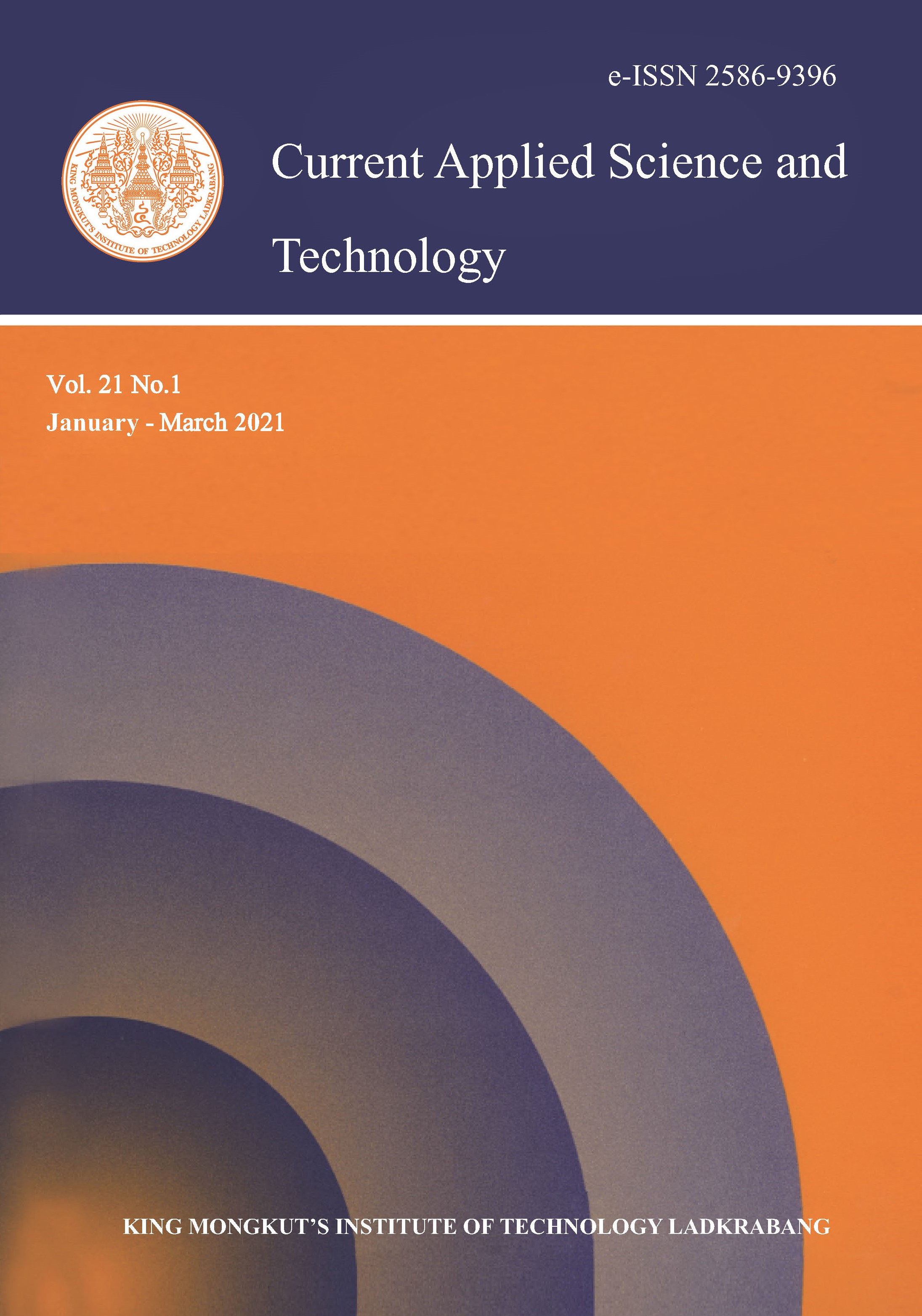Spectrophotometric Determination of Zn(II) in Pharmaceutical Formulation Using a New Azo Reagent as Derivative of 2-Naphthol
Main Article Content
Abstract
For the fast investigation of Zn(II) using 2-hydroxy-5-(2-hydroxynaphthalen-1-yl) benzoic acid, a specific novel spectrophotometric technique is suggested in this research. The interaction of the azo reagent with Zn(II) is instantaneous at pH 7, and the absorbance of the solution is stable for more than 24 h. The technique allows zinc levels of 1-18 ppm to be calculated, with a molar absorption of 1.516 x104 l mol-1 cm-1. The suggested method for estimating zinc has been widely applied in many pharmaceutical formulations. The error of the determination does not exceed 4%.
Keywords: azo reagent; determination of zinc; spectrophotometry; pharmaceutical preparations
*Corresponding author: Tel.: 07809086646
E-mail: muhaimin.alrufaie@uokufa.edu.iq
Article Details
Copyright Transfer Statement
The copyright of this article is transferred to Current Applied Science and Technology journal with effect if and when the article is accepted for publication. The copyright transfer covers the exclusive right to reproduce and distribute the article, including reprints, translations, photographic reproductions, electronic form (offline, online) or any other reproductions of similar nature.
The author warrants that this contribution is original and that he/she has full power to make this grant. The author signs for and accepts responsibility for releasing this material on behalf of any and all co-authors.
Here is the link for download: Copyright transfer form.pdf
References
Roohani, N., Hurrell, R., Kelishadi, R. and Schulin, R., 2013. Zinc and its importance for human health: An integrative review. Journal of Research in Medical Sciences, 18(2), 144-157.
William, D. R., 1985. Analytical Methods in Human Toxicology. New York: Academic Press.
Frassinetti, S., Bronzetti, G., Caltavuturo, L., Cini, M., and Croce, C.D., 2006. The role of zinc in life: a review. Journal of Environmental Pathology, Toxicology and Oncology, 25(3), 597-610.
Maeda, M., Kinoshita, T. and Tsuji, A., 1970. A novel fluorophotometric method for determination of hexosamines using pyridoxal and zinc (II) ion. Analytical Biochemistry, 38(1), 121-129.
Mahanand, D. and Houck, J.C., 1968. Fluorometric determination of zinc in biologic fluids. Clinical Chemistry, 14(1), 6-11.
Tetsuo, M., Saito, M., Horiguchi, D. and Kina, K., 1982. A highly sensitive colorimetric determination of serum zinc using water-soluble pyridylazo dye. Clinica Chimica Acta, 120(1), 127-135.
Smith, J.C., Butrimovitz, G.P. and Purdy, W.C., 1979. Direct measurement of zinc in plasma by atomic absorption spectroscopy. Clinical Chemistry, 25(8), 1487-1491.
Tekale, P.P., 2012. Extractive spectrophotometric estimation of zinc from food and pharmaceutical samples using 1-phenyl-1-hydrazonyl-2-oximino propane-1, 2–dione reagent. Der Pharmacia Lettre, 4(6), 1883-1887.
Zareba, S., Pomykalski, A. and Marzec, Z., 2004. Spectrophotometric determination of Fe(II) and Zn(II) in the pharmaceutical multivitamin preparation with microelements. Acta Poloniae Pharmaceutica, 61(3), 175-179.
Stanislaw, Z., 1995. Spectrophotometric determination of zinc in pharmaceutical multimineral preparations by azo-dye derivatives of Benz imidazole and 1,2,4-triazole. Pharmaceutica Acta Helvetiae, 70(2), 195-198.
Bhalotra, A. and Puri, B.K., 1999. Trace determination of zinc in standard alloys, environmental and pharmaceutical samples by fourth derivative spectrophotometry using 1-2-(thiazolylazo)-2-naphthol as reagent and ammonium tetraphenylborate supported on naphthalene as adsorbent. Talanta, 49(3), 485-493.
Saeed, A. and Shabir, G., 2018. Synthesis and characterization of high wash fastness novel azo reactive dyes incorporating aromatic bridged diamines. Arabian Journal of Chemistry, 11(1), 111-119.
Rush, R.M., and Yoe, J.H., 1954. Colorimetric determination of zinc and copper with 2-carboxy-2-hydroxy-5-sulfoformazylbenzene. Analytical Chemistry, 26(8), 1345-1347.
Karpińska, J. and Kulikowska, M., 2002. Simultaneous determination of zinc (II), manganese(II) and iron(II) in pharmaceutical preparations. Journal of Pharmaceutical and Biomedical Analysis, 29(1-2), 153-158.
Alabidi, H.M., Alabidi, A.M. and Makki, N.F., 2018. Synthesis and spectroscopic studying of new azo ligand from 2-naphthol derivative and it's complexes with some transition metal ions. Al- Qadisiyah Journal of Pure Science, 23(1), 186-195.
Ali, A.A.M. and Alabidi, H.M., 2019. Synthesis and spectroscopic study of some transition metal complexes with 2-(4-iodo phenyl azo)-4, 5-diphenyl imidazole. Journal of Physics: Conference Series, 1294 (5), https://doi.org/10.1088/1742-6596/1294/5/052021
Geary, W. J., 1971. The use of conductivity measurements in organic solvents for the characterization of coordination compounds. Coordination Chemistry Reviews, 7(1), 81-122.
Stuart, B. 2000. Infrared spectroscopy. In Kirk‐Othmer Encyclopedia of Chemical Technology. New Jersey: John Wiley&Son.
Korn, M.D.G.A., Ferreira, A.C., Teixeira, L.S.G. and Costa, A.C.S., 1999. Spectrophotometric determination of zinc using 7-(4-nitrophenylazo)-8-hydroxyquinoline-5-sulfonic acid. Journal of the Brazilian Chemical Society, 10(1), 46-50.
Khedr, A.M., and Gaber, M., 2005. Spectrophotometric studies of the reaction of zinc (II) with some azo-triazol compounds and its application to the spectrophotometric determination of microamounts of zinc(II). Spectroscopy Letters, 38(4-5), 431-445.
Amin, A.S.,1994. Spectrophotometric determination of zinc in pharmaceutical samples with some salicylic azo compounds. Analytical Letters, 27(1), 95-102.
Zaręba, S., 1995. Spectrophotometric determination of zinc in pharmaceutical multimineral preparations by azo-dye derivatives of benzimidazole and 1, 2, 4-triazole. Pharmaceutica Acta Helvetiae, 70(2), 195-198.
Zaręba, S. and Pomykalski, A., 2003. Spectrophotometric determination of Zn in pharmaceutical preparations: Antioxidant and zincuprin forte by azo-dye derivatives of thriazolodiazophenols. Sectio AA-Chemia, 6, 94-100.


